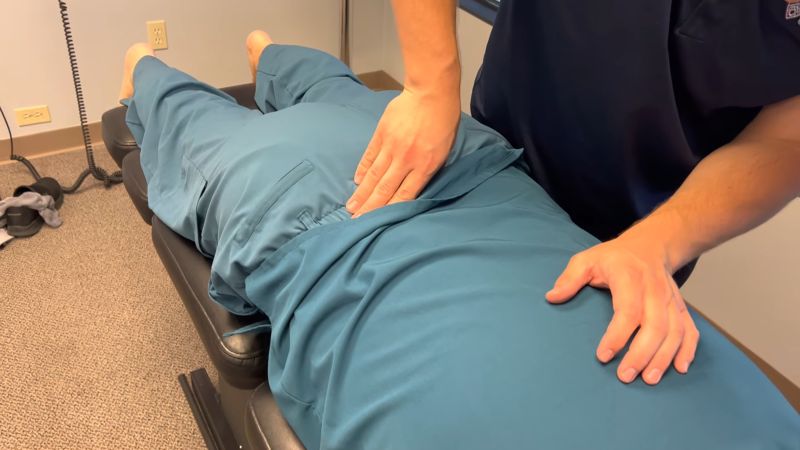In our constant quest for wellness, we continually explore various avenues to achieve the healthiest version of ourselves. Today, we delve into a technique that combines the principles of mathematics, physics, geometry, and biology to offer corrective care: Chiropractic BioPhysics (CBP). This blog post will take you on an explorative journey of CBP, from its history to understanding its principles, application, and potential benefits. Let’s dive into this intriguing world of holistic health.
An Overview
Chiropractic BioPhysics, or CBP, is an approach to chiropractic care that emphasizes optimal postural design and spinal alignment, grounded on scientific principles and evidence-based care. Let’s take a closer look at this fascinating technique.
The History

Chiropractic BioPhysics was developed in the early 1980s by Dr. Donald Harrison, a mathematician, engineer, and chiropractor, and his son Dr. Deed Harrison. Dr. Donald Harrison aimed to bring a greater level of scientific and mathematical rigor to the field of chiropractic care. This intention birthed the CBP technique, which was further refined and popularized by Dr. Deed Harrison after his father’s passing.
In the four decades since its inception, CBP has grown into one of the most researched and validated techniques in the field of chiropractic care, supported by hundreds of scientific studies and clinical trials. Today, it’s widely taught in chiropractic colleges across the world and practiced by many chiropractic professionals.
The Principles
CBP operates on the principle that the human body’s optimal structure leads to optimal function. It views the body as a biomechanical structure, with the spine being the cornerstone of this structure. Any misalignment or deviation in the spine’s normal curvature can lead to a range of health issues.
CBP adopts the principle of “structure dictates function.” Meaning, a well-aligned, balanced structural framework enables the body to function at its best. On the other hand, structural misalignments, termed subluxations, interfere with the body’s normal functioning. This interference can lead to pain, disease, and a lower quality of life.
Delving Deeper: The Techniques Used in CBP

CBP utilizes an array of techniques to address spinal misalignment and its associated complications. Here, we’ll look at some of these methods.
Examination Techniques
Before beginning treatment, chiropractors trained in CBP conduct a thorough examination of the patient. They’ll gather detailed medical history, perform physical examinations, and utilize imaging studies like X-rays or MRI scans to visualize the patient’s spinal structure.
- The physical examination can include a range of motion testing, orthopedic assessments, and neurological examinations.
- Imaging studies help to pinpoint the exact nature and degree of spinal misalignment, serving as a guide for subsequent treatments.
With these diagnostic tools, CBP practitioners are equipped to create individualized treatment plans that address each patient’s specific needs.
Adjustments and Exercises

CBP practitioners utilize specific adjustments and exercises tailored to the individual’s needs. These can include:
- Manual adjustments: Chiropractors apply precise, controlled force to realign the spine and correct subluxations.
- Instrument-assisted adjustments: Using specialized tools to apply force and realign the spine.
- Traction: Patients are placed in specific positions with specially designed equipment to encourage the spine to adopt its normal curvature.
- Therapeutic exercises: These are tailored to strengthen muscles, improve flexibility, and support spinal health.
These techniques work synergistically to restore the spine’s normal alignment, promote body function, and alleviate discomfort.
Potential Benefits of CBP: Beyond Pain Relief
While many people seek chiropractic care for pain relief, CBP provides more holistic benefits. Here are a few potential advantages of this technique.
Improved Posture
Posture plays a vital role in our overall health and well-being. An upright posture allows for the efficient function of our organs, while poor posture can lead to various health issues.
CBP aims to restore the natural curvature of the spine, leading to improved posture. Regular treatment can help alleviate the stress and strain on muscles and joints caused by poor posture and can potentially prevent future health problems.
Enhanced Overall Health and Well-being

CBP goes beyond addressing the immediate symptoms and seeks to improve overall health and well-being. By aligning the spine, it supports the optimal functioning of the nervous system, which controls all bodily functions.
Regular CBP care can lead to the following:
- Improved mobility and flexibility.
- Better sleep due to decreased pain and discomfort.
- Enhanced immunity as the body can communicate more efficiently.
- Reduction in stress and anxiety through the relief of physical tension.
CBP fosters a proactive approach to health, encouraging patients to take an active role in their well-being.
Is CBP Right for You?
While the science and principles behind CBP are fascinating, the ultimate question is whether it’s the right approach for you.
Considerations for Treatment

Like any medical treatment, CBP is not a one-size-fits-all solution. Its suitability depends on your health status, medical history, and personal preferences. Here are some points to consider:
- Your Health Status: If you suffer from chronic pain, posture-related issues, or have a condition that could benefit from improved nervous system function, CBP may be worth exploring.
- Your Treatment Preferences: If you prefer a non-invasive, drug-free approach to health, you might find CBP appealing.
- The Practitioner’s Expertise: Ensure the practitioner you choose is well-versed and certified in CBP.
FAQs
Who are the founders of the Chiropractic BioPhysics Technique?
The Chiropractic BioPhysics Technique was originally named by Drs. Donald Harrison, Deanne Harrison, and Daniel Murphy in December 1980.
What are the goals of the Chiropractic BioPhysics Technique?
The primary goals of the CBP Technique are optimal posture and spinal alignment. It also aims to document improvements in pain and functional-based outcomes. The uniqueness of CBP treatment lies in the structural rehabilitation of the spine and posture.
What is the Harrison Spinal Model?
The Harrison Spinal Model is an evidence-based model for side-view spinal alignment. It is the geometric path of the posterior longitudinal ligament or the backs of the vertebra from the 1st neck vertebra to the bottom of the lower back or top of the sacrum.
What is the role of X-Ray Analysis in Chiropractic BioPhysics Technique?
X-ray analysis and line drawing procedures are utilized in CBP to establish optimal and average sagittal models. CBP protocols require that the doctor must measure the displacements on spinal radiographs (segmental Subluxation). Both lateral-side view and anterior to posterior (AP) or frontal view CBP x-ray line drawing procedures have been studied and found to be reliable.
What is CBP Postural Analysis?
CBP Postural Analysis involves using engineering concepts to describe all spinal-vertebral segmental movements as rotations and translations in 3-dimensions. Dr. Don Harrison was the first to describe abnormal postures of the head, rib cage, and pelvis in this manner.
What are Mirror Image Postural Adjustments?
In March 1980, Dr. Don Harrison originated postural Chiropractic adjusting procedures that he coined “Mirror Image.” These adjusting set-ups were found to result in postural and spinal alignment improvements verified with follow-up x-ray.
What are Mirror Image Postural Exercises?
Mirror Image posture exercises are performed to stretch shortened muscles and to strengthen those muscles that have weakened in areas where postural muscles have adapted to asymmetric abnormal postures.
What is Mirror Image Postural and Spinal Traction?
Mirror Image postural and spinal traction provides sustained loading periods of 10-20 minutes and is necessary to cause visco-elastic deformation to the resting length of the spinal ligaments, muscles, and discs.
What is the frequency and duration of CBP Technique Care?
A typical patient is started with relief care at a frequency of 4 times per week for 3 weeks or 12 visits. After this 12-visit relief care regiment, the patient is transitioned into CBP structural rehabilitative E.A.T. procedures. To determine if the CBP E.A.T protocol of corrective care for each individual is achieving the desired normalization of posture and spinal alignment, re-examinations are suggested at 36-visit intervals.
Final Words
CBP offers a journey towards holistic wellness, allowing you to tackle both your immediate health concerns and improve your overall well-being. However, like all healthcare decisions, it’s best made in consultation with a healthcare professional.
Through CBP, we have a powerful tool that marries the precision of science with the natural healing abilities of the body. As we continually strive to find the healthiest versions of ourselves, exploring techniques like CBP opens new avenues toward achieving this goal.
In the world of chiropractic care, Chiropractic BioPhysics has emerged as a unique, scientific, and highly effective approach to spinal health. As you navigate your health journey, it’s an option worth considering.






